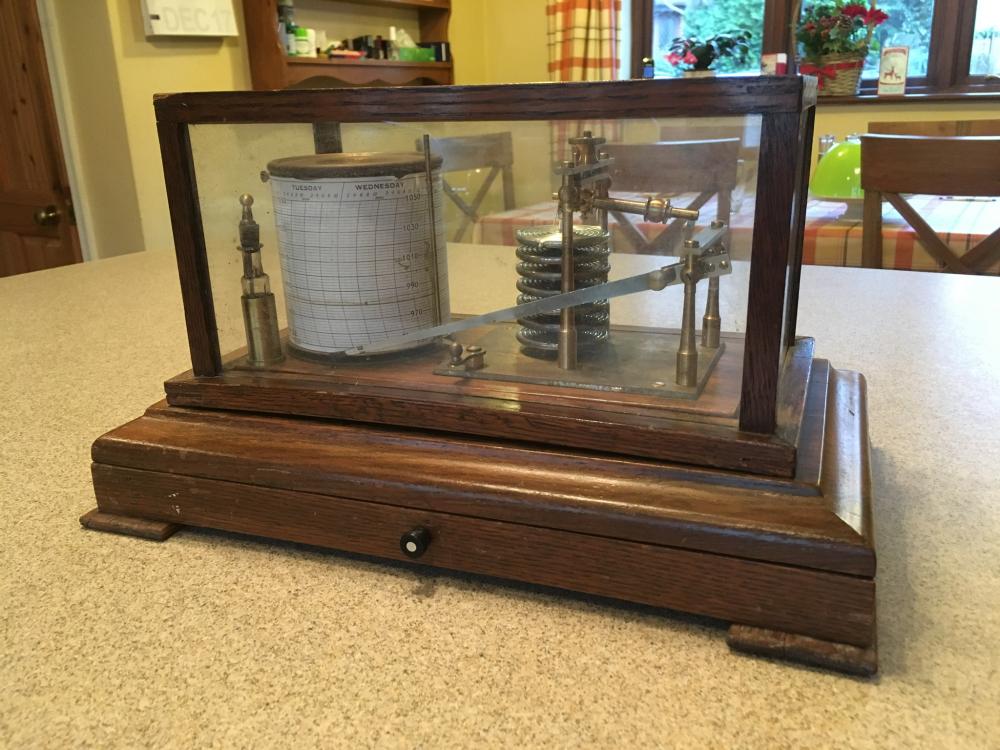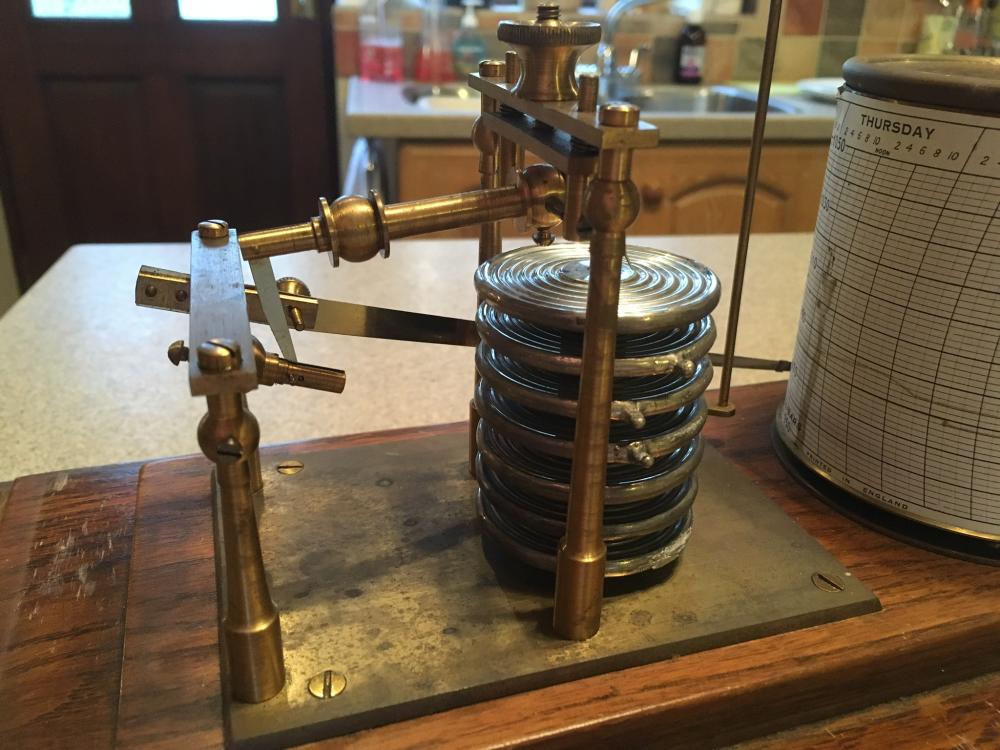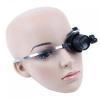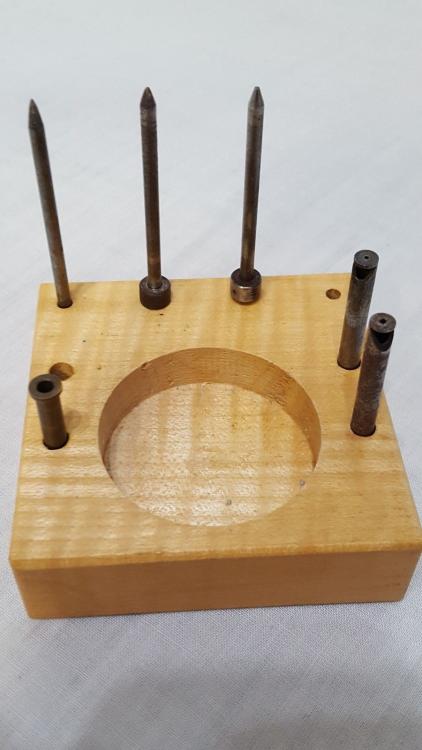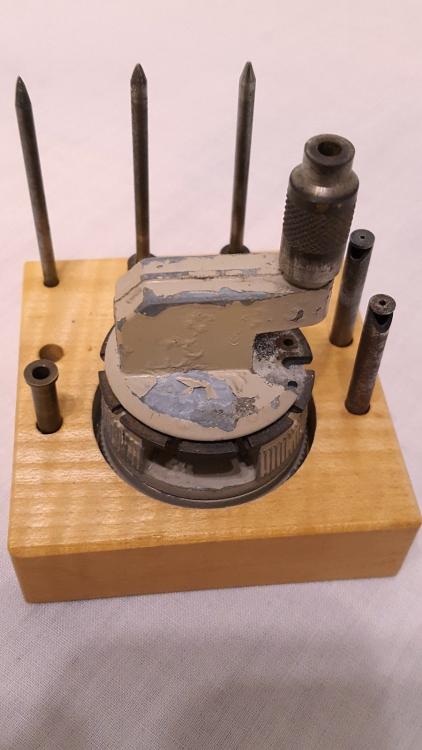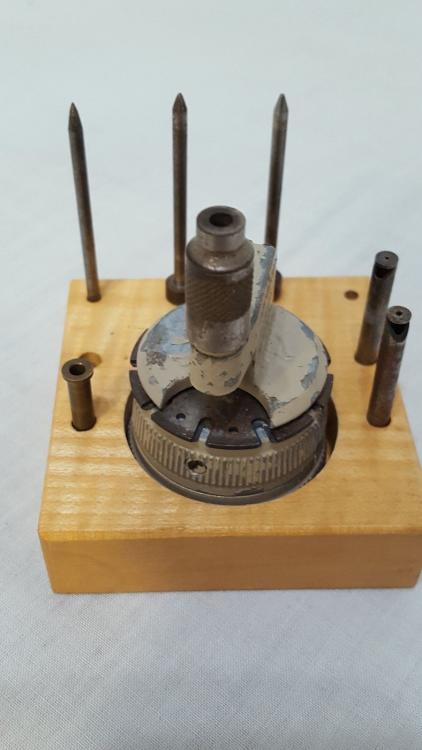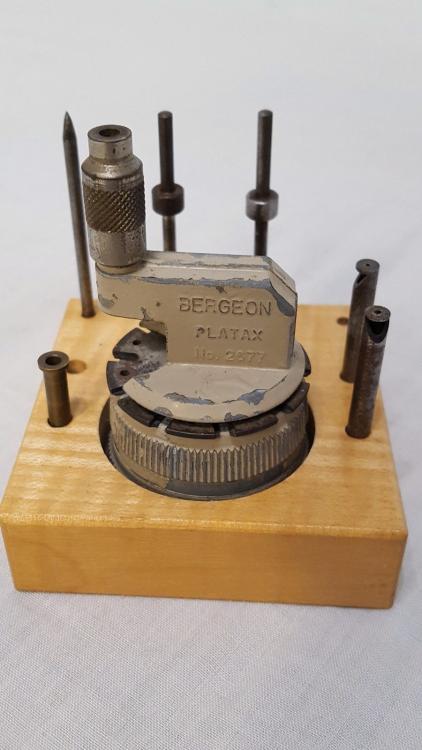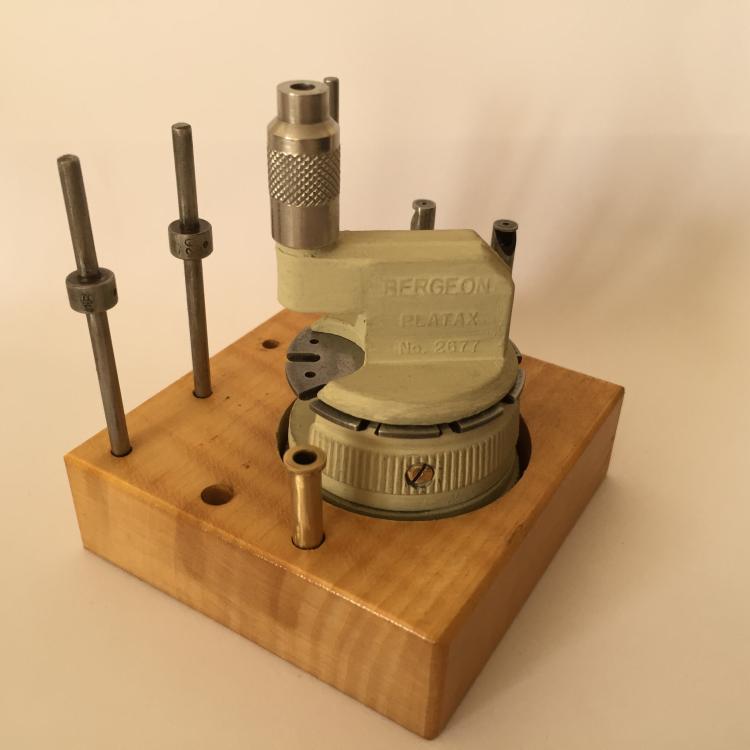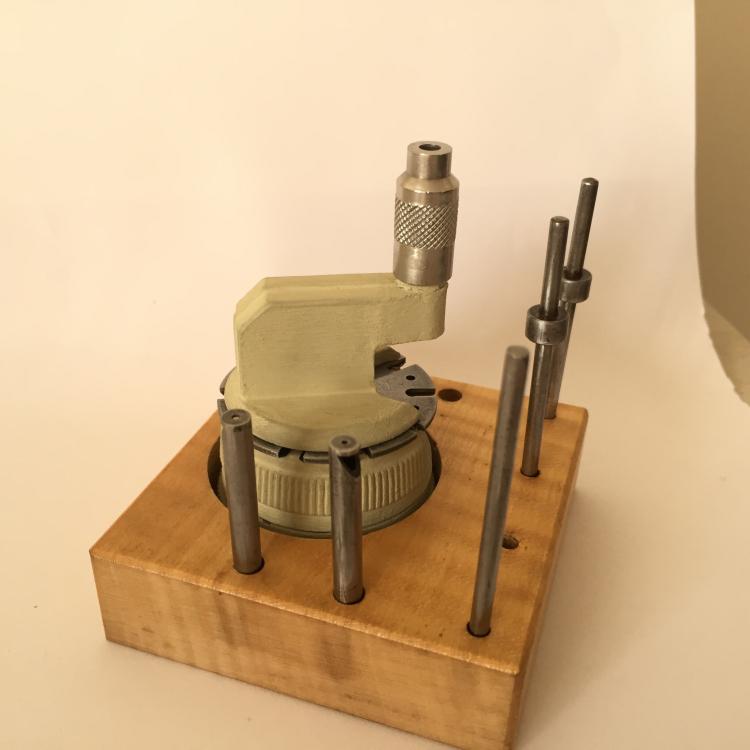Leaderboard
Popular Content
Showing content with the highest reputation on 12/27/17 in all areas
-
Hi folks, I just got interested in Watches and Watch repair since I inherited my Dad's Watch Repair Bench from back in the late 40's. He took some training in Horology and Repair after the Navy and became very good at it. He retained his skills over the years fixing watches and clocks on the side while he was in the Phone Company. I've always been interested in how things "tick" by pulling them apart and putting them back together (which didn't always happen ;-) I'm interested in building instruments, play 5 String Banjo and Mandolin, Bird carving and CNC carving as well! Along with my Dad's work bench I have a lot of Pocket watches including my Great Great Grandfathers RR Retirement watch! I'm excited about being involved in this forum and these discussions!2 points
-
We all loose parts from time to time. Good tweezers such as Dumont help and when dressing them; leave a slightly rough inner surface near the tip makes a big difference [emoji16] Sent from my SM-G920F using Tapatalk2 points
-
Hi everyone, My name is Max and I'm a young, aspiring British watchmaker. For a few years I have been wanting to make a watch entirely from scratch. Movement and all, designed in-house. I've been collecting all the tools I need and I nearly have them all, so soon I'll finally be able to really start. I have a lot of experience with precision machining and making fine jewellery and I have a passion for mechanical things, especially watches and horological items in general. Thanks, M.2 points
-
There’s no section on here for barographs, but I’m going for clock corner and calling it a clock with a complication Santa brought me one of these as another project (because I completed so many of the ones I planned to do last year... honest...). Has anyone here ever worked on the bellows from these? At least one of the capsules in this set needs to be re-vacuumed. It looks like it’s been resoldered but has air in it and makes the stack too high, also it won’t respond correctly to pressure changes like this, but I’m not expecting a perfect calibration here! I’m thinking that I could make up a small brass tube, insert it into the solder joint, suck the air out then crimp it closed before sealing with a blob of solder. It looks like this is how the rest are formed. What I don’t know is how much of a vacuum I need to achieve. Will it be enough to remove as much as I can with a large syringe or am I going to need to acquire a better vacuum pump? It feels as though if these were really pumped out then the plates would collapse? Thoughts welcome, shared wisdom, knowledge or experience very welcome!1 point
-
Hello everyone. My name is John and I'm a total newbie. I was left 2 watches by my late Grandfather, a Waltham pocket watch and a Smiths De Luxe wrist watch, both in need of attention. Having managed to clean up the Waltham, I am now about to attempt the Smiths so I'm looking forward to any help and tips you can give me along the way.1 point
-
To be honest, it looks like a selection of broken taps, drills and reamers which have had their ends reground to use as drill bits. I assume that what Latvas is referring to is these https://www.cousinsuk.com/product/seitz-jewelling-reamers-spindle1 point
-
Ishma beat me to the answer by a few seconds, and he has outlined the screws that need to be removed. I do think that if you have a single edged razor blade (or suitably thin edge) you should be able to separate the bezel and crystal from the case, which you will have to do to remove the movement. The bezel and crystal should separate together from the case if you carefully pry it away. But first remove those two screws that Ishma has indicated. J1 point
-
1 point
-
My skills are improving, but I still get careless and the occasional part pings off the table. My first search is using a powerful torch Then I uset a strong Neodinium magnet to sweep the area. Finally, I empty the Dyson, and vacuum the hole desk, me, room and examine the contents. The time I've wasted ...... Until I perfected the art (and realised a slighly soft surface helps a lot), I had problems with cap jewels - like playiing tiddly winks, and not being magnetic even harder to find.1 point
-
That doesn’t look terrible. I’d follow the usual procedure of mounting on the balance clock, placing the brequet overcoil within the curb pins and see if it looks like the collet is centred on the jewel hole. Check the curb pins are not grabbing the hairspring. They should be set just wider to be snug, say 1.5x the hairspring thickness. Apologies if you know all of this already.1 point
-
Thanks for this precaution. You really have to ask the right experts. Some instructions on the web seems to be the right way to go until you ask those with more experience. Sent from my ASUS_Z010D using Tapatalk1 point
-
Sorry, my mistake. I thought that I'd read it was a 7 jewel movement. It obviously is not. If it's a 4/0 movement, that's fairly small to be worked on as a beginner. My hat's off to you for getting into something that small pretty early on in your watch repairing life. It looks like you're getting the hang of it like a natural. Good luck with it. Cheers.1 point
-
I use 9415 on pretty much all jewelled watch pallets. I’ve even used it on clock pallets as it tends to stay in position quite well (I’d describe it as a grease).1 point
-
You forgot to add, “while hoping my wife doesn’t come into the room and find me.” ???????? Sent from my iPhone using Tapatalk1 point
-
Good morning. My suggestion is to power down completely and to remove the balance wheel and pallet fork. Now turn the barrel slowly and if you truly don’t have issues with the train wheel the escape wheel should start spinning rapidly. It shouldn’t take more than half a barrel turn. Caution as too much power can damage the wheels badly. If it doesn’t turn, then you have to find what’s wrong on this side of the movement. If it does spin freely than it’s either the pallet fork or the balance wheel. Good luck and keep us posted [emoji1303] Sent from my iPhone using Tapatalk1 point
-
I treated myself to an early Christmas present of a vintage Junghans stopwatch. Image 26-12-2017 at 9.08 by S STEEL, on Flickr Got it quite cheap due to a crack in the glass, so will be renewing that soon. Perfect working order, apart from the crack, it looks like new.1 point
-
So I picked up this bad boy on eBay from someone in Spain. It's pretty messed up cosmetically, and missing a heeled bush and a removing punch. Considering all that, I definitely overpaid, but oh well. I don't know how rare these are to find on eBay, so I just decided to grab it. I scraped off all the old flaking paint and found a very similar color paint at Michaels. Not a very professional job and you can see some brush strokes, but all in all it's much better. I know the colors look off in the pictures, but that's a camera white balance issue. In real life the colors are very similar... a completely unattractive greenish gray oatmeal. Why Bergeon used this color I'll never know. Carefully removed the rust from the metal plate with steel wool and very very fine sandpaper. Did the same with the punches and bushes which had a nice coat of oxidation on them, then put them through the ultrasonic like they were watch parts. The original chrome plating had worn away on the top knurled nut, but not to fear! I busted out my little Caswell "Plug N Plate" kit and used "copy chrome" (real chrome plating is dangerous and pretty toxic apparently, but I can't see much of a difference between old chrome plate and Caswell's 'copy chrome' - looks about the same). The biggest unknown was if I could find replacement punches / bushes and yep! I just ordered them from perrinwatchparts.com... they were super expensive. I definitely overpaid for these, but again, oh well. I just wanted the tool to be complete. So ta da! I now have a Platax tool. I'm going to break out one of my many Bulova movements with a broken staff and experiment with using this tool on the poor thing. I don't know the I really needed this tool, per se. I have a nutcracker - type roller remover which works pretty well (I might have broken a few staffs by squeezing a little too much, but those staffs were broken anyway), and I have the little K & D balance remover tools for my staking set. I don't see how the Platax tool would be so so much better than the K & D tool, and I'd imagine any objections or concerns about the K & D tool widening the hole in the balance by using force instead of cutting out the old staff would also apply to the Platax tool, no? It also uses force to drive out the old staff while keeping the balance arms pinned. So maybe I didn't strictly need this, but when it popped up on eBay I couldn't resist, because I want to be able to follow along with what Mark does as closely as possible... and I'm still so new at doing this. So, now I have a Platax tool, a complete 'inverto' K & D staking set (got for under $100, go eBay!), and just picked up a Seitz Jeweling tool (ouch, that was too expensive). I am now wondering what other real watchmaker specific tools you need to have to be able to deal with most, if certainly not all, the issues you find on vintage watch movements ??? I mean, I'm not going to buy an old mechanical watch washer and put it in my one bedroom apartment in manhattan, not going to happen (at least, not if I don't want my husband to divorce me ). So I make do with a tiny, cheap Chinese made ultrasonic machine. And obviously, I'm not going to buy a lathe either, for similar reasons (space constraints, expense, plus wouldn't know how to even begin to use it)... but I'm wondering if I've covered almost everything else? In terms of being able to make watch parts, yeah, that's the holy grail. Living in manhattan comes with many advantages and disadvantages. The disadvantages are obviously space constraints and expense of living. But the advantages are there are lots and lots of resources. In fact, there are a few "Maker Spaces" in the city, which are co-ops you can join and you can use their tools, like CNC mills, CNC lathes, 3D printers, 3D scanners etc etc... you can join these co ops for not much money, and they teach you how to use the tools.... I know that the consensus so far is that 3D printing watch parts won't work, because the machines are not accurate enough on such a small scale. But the CNC lathes? The CNC mills? Could they do micro-machining, in theory? It's something to think about. I think I'll create another thread about that sometime. Maybe I can pick up some good tips. Anyway, hooray for overpriced watch tools! They are so much fun!1 point
-
I've been working on my little collection of watches (Seiko 5106, ETA 536.121 in a Birk's branded diver, ETA 2783 in a Benrus, ETA 2789 running a really nice Mirexal dial/case, 1950's Wittnauer Automatic in the queue for an overhaul)) for about a year now and I've decided that Rodico, good tweezers, excellent screwdrivers, eye-glass mount loupe lens, and decent cleaning fluids and u-sonic machine - plus the all-important "large" turkey roasting bag - are my favorite tools. I will get a real watch cleaning machine at some point, and a timer. And probably progress to jewel and balance work in the not too distant future. I've also discovered that the mechanics of precision work, mostly thanks to Mark's great videos and Martin's unbelievably good writing and photos in "adventuresinamatuerwatchfettling", are pretty accessible and moderately straightforward to learn. So far, I've stuck to stripping, cleaning, lube and re-assembly, plus replacing worn or damaged parts, including crystals. What I haven't been able to quickly understand is the sourcing of parts, cross referencing, sources of information (technical manuals), and how much experience and knowledge counts for knowing how to identify and source replacement parts. Even mundane things like a cross reference between my Seiko 5106-8010 to the OEM replacement crystal number takes me an hour of checking on the internet, or deciding what the correct gasket/o-ring size for a watch case back is still a matter of fear and trepidation. i hope that comes with experience and practice - but from my perspective, that is the hardest part of watch maintenance (I'm not going to claim I'm repairing) - identifying replacement parts for my old watches. luckily, this site, forum and friendly community exists to help. Thanks to everyone who asks and answers questions - your curiousity and skills feed my own and I appreciate the thoughtful, supportive, generous nature of forum users. Attached is the 5106 - a 33 jewel marvel from Seiko. A ton of parts, but they all serve a purpose - hacking seconds, instant/simultaneous day/date change, manual date change, automatic and manual wind, and every jewel supports a rotating shaft. Happy New Year! Bill1 point


